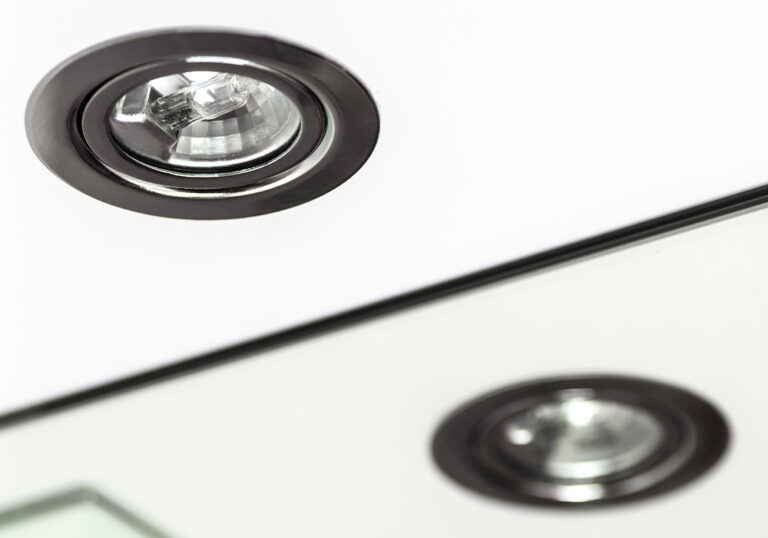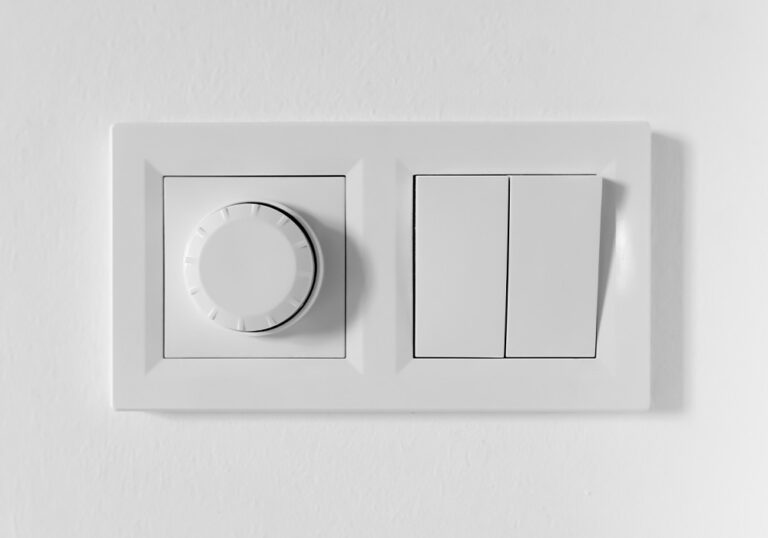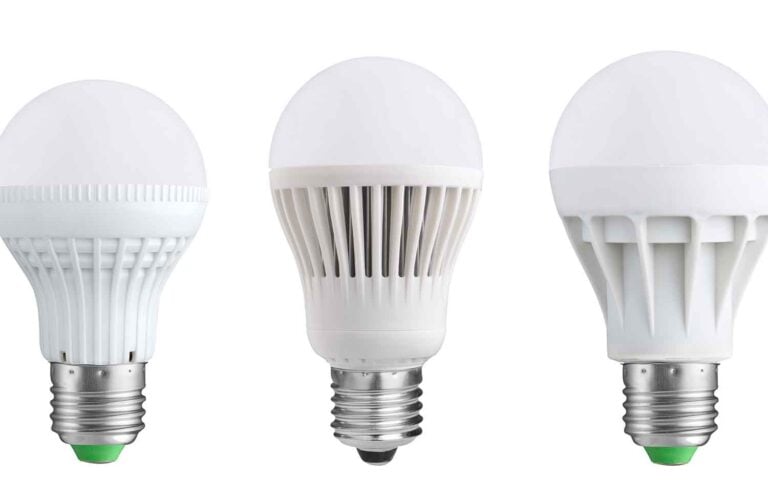How Many Amps Do LED Lights Draw?
Understanding the amperage of LED lights is essential for various applications, from designing energy-efficient lighting systems to choosing the most suitable light for your space. LED lighting solutions have gained popularity due to their low energy consumption and long lifespan. The number of amps that an LED light draws impacts its energy efficiency, making it a significant factor to consider.
The amperage, or current, refers to the flow of electric charge in a circuit, affecting the power consumption of electrical devices, including LED lights. As LED technology advances, these lights have the ability to emit high brightness levels with relatively low amperage. However, multiple factors influence the amount of current LED lights draw, such as their wattage, input voltage and driver efficiency.
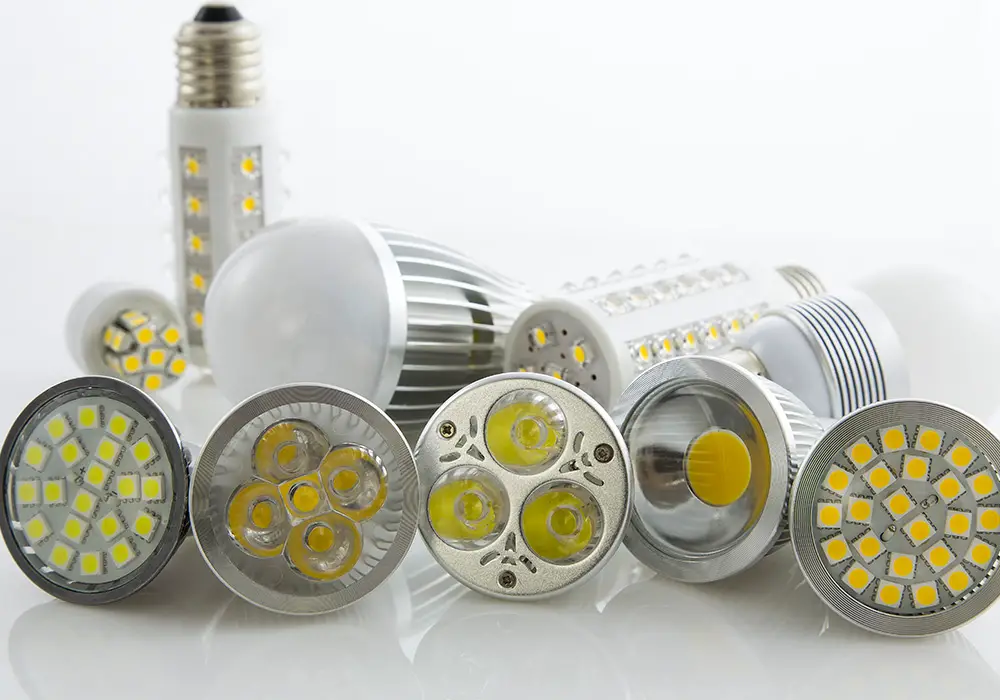
Calculating the amperage of LED lights is crucial for assessing their energy consumption compared to traditional lighting solutions, like halogen or incandescent bulbs. By comparing them, one can make informed decisions when selecting the most energy-efficient lighting option for a given application. Additionally, understanding LED amperage can also address frequently asked questions related to their performance and power requirements.
Key Takeways
- Amperage affects LED lights’ energy efficiency, making it a critical aspect to consider
- LED amperage is impacted by factors such as wattage, input voltage, and driver efficiency
- Calculating LED light amps helps in selecting energy-efficient lighting options and addressing common queries
Basics of LED Light Amperage
LED lights are an energy-efficient alternative to traditional lighting solutions like incandescent bulbs and halogen lights. You might be wondering how many amps LED lights draw, and it’s crucial to understand the basics of LED light amperage to make informed decisions when selecting and installing them.
Power consumption of LED lights is significantly lower than most other types of lighting. This characteristic is primarily due to their low current draw, which is measured in amperes (amps). The amperage of an LED light is directly related to its power consumption (wattage) – a higher amperage means higher wattage and vice versa.
To calculate the amperage of an LED light, simply divide the wattage by the voltage of the power supply. For example, if you have a 10-watt LED light connected to a 12-volt power source, the amperage calculation would be:
Amperage = Wattage / Voltage
Amperage = 10 watts / 12 volts
Amperage = 0.83 amps
Different LED lights will have varying amperages depending on factors like brightness, colour temperature, and physical size. Here are some typical LED light amperages:
- LED strip lights: 0.8 to 1.5 amps per metre
- LED bulbs: 0.05 to 0.15 amps
- LED spotlights: 0.25 to 0.6 amps
- LED floodlights: 2 to 6 amps
When planning an installation, it’s essential to consider the amperage of all connected LED lights to ensure that your power supply can handle the total current draw. For example, if you’re installing 10 metres of LED strip lights at 1.5 amps per metre, the total amperage would be 15 amps. In this case, a power supply with at least a 15-amp capacity would be necessary.
By understanding the basics of LED light amperage, you can make better decisions when selecting and installing energy-efficient lighting solutions in your home or workplace. Remember to consider factors like brightness, colour temperature, and individual light types when calculating the overall current draw.
How LED Lights Draw Power
LED lights, or light-emitting diodes, are highly energy-efficient and popular for various applications. To understand their power consumption, let’s delve into how they draw power and the factors that affect their power requirements.
LED lights draw power by converting electrical energy into light through semiconductor materials. When a voltage is applied across the semiconductor, electrons and holes within the material recombine and emit photons, creating light. This process is more efficient than traditional incandescent and fluorescent lights, which lose a significant amount of energy as heat. The amount of power an LED light draws depends on various factors, including voltage, current, and power rating.
One factor to consider when calculating power draw is the forward voltage. Forward voltage is the minimum voltage required to turn on an LED light. LEDs typically have a forward voltage ranging between 2V-4V, depending on the specific type and colour. The higher the forward voltage, the more power the LED will draw.
Another factor is the current flowing through the LED. Current is measured in amps (A) or milliamps (mA) and is regulated by a resistor or a driver to ensure a consistent brightness output. Most standard LED lights operate at currents between 20mA-30mA, although high-powered LEDs can require much higher currents.
To determine the power draw of an LED light, you can simply multiply the forward voltage by the current. Power is measured in watts (W). For example, if an LED has a forward voltage of 3V and operates at a current of 20mA, its power draw would be 3V * 0.02A = 0.06W.
In summary, LED lights draw power through a combination of forward voltage and current. By understanding these factors and their role in determining power consumption, you can make informed decisions about the lighting choices for your home or business. Remember that using energy-efficient LED lights can significantly reduce your electricity bills and ultimately help the environment.
Variables Affecting LED Light Amperage
When using LED lights, it’s essential to consider various factors that can impact their amperage. By being aware of these variables, you can make informed decisions about the appropriate lighting equipment for your needs.
One significant factor is the LED type. Different LEDs have different power requirements, and consequently, they draw different amounts of current. For example, high-power LEDs typically require more current than low-power ones. It’s crucial to check the manufacturer’s specifications for each LED type to determine the appropriate amperage.
Another variable is the power supply voltage. In general, the amperage drawn by an LED light is influenced by the voltage supply being used. Higher voltage supplies will result in increased current draw, so it’s important to match the LED light to the appropriate power supply.
The circuit configuration of your LED lights also affects their amperage. LED lights can be wired in series or parallel, and each arrangement has its advantages and drawbacks. In a series circuit, the current flows through each LED sequentially, remaining constant throughout. In contrast, in a parallel circuit, the current is divided among the individual LEDs. This difference in wiring can influence the overall amperage drawn by the system.
The number of LEDs used in the lighting setup is also a crucial factor. The more LEDs that you have, the higher the overall amperage draw. It’s necessary to account for the total number of LEDs to ensure that your power supply can handle the combined amperage requirements.
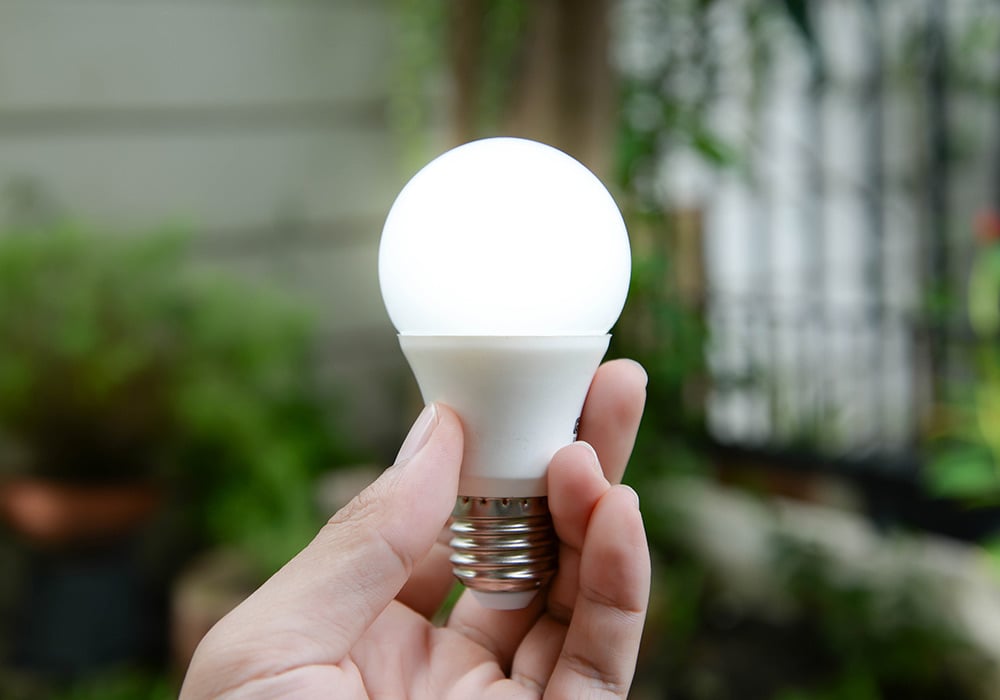
Lastly, the environmental conditions can impact the amperage drawn by LED lights. Factors such as ambient temperature and humidity can affect LED performance and efficiency. Generally, lower temperatures cause LEDs to draw less current, whereas higher temperatures can lead to increased current draw. Maintaining stable environmental conditions will help ensure consistent and efficient LED performance.
All these variables should be taken into account when selecting and installing LED lights to ensure that they operate efficiently and effectively. By considering these factors, you can make informed decisions about the type of LEDs, power supplies, and circuit configurations that best suit your needs.
Calculating the Amps of LED Lights
Before diving into calculations, it’s essential to understand a few basic concepts. Amps (Amperes) represent the electric current going through a device, while watts indicate the device’s power requirement. To calculate how many amps your LED lights draw, you will need two key pieces of information: the wattage of the LED light and the voltage of your electrical system.
Typically, LED lights operate on 12V or 24V DC electrical systems. To determine the amps drawn by an LED light, simply divide the light’s wattage by the voltage of the system. Here’s the formula:
Amps = Watts / Voltage
For example, if you have a 48W LED light and your system operates at 12V, the calculation would be:
Amps = 48W / 12V = 4A
In this case, the LED light would draw 4 amps from the electrical system, which is relatively low compared to traditional lighting sources like incandescent bulbs.
One of the primary benefits of LED lights is their energy efficiency. A similar brightness in traditional lighting often requires much higher wattage, thus drawing more amps and resulting in higher power consumption. With LED lights, you get a similar amount of light output for significantly lower amps, ultimately reducing your energy bills and environmental impact.
Calculating the total amp draw for a set of LED lights is as simple as adding up the individual amp draws. For instance, if you have multiple LED lights with different wattages, first determine the individual amps for each light, then add them together:
- Calculate the amp draw for each light using the formula mentioned above.
- Add the amp draws together.
Total Amps = LED Light 1 Amps + LED Light 2 Amps + ... + LED Light N Amps
By following these steps, you can determine the total amps drawn by your LED lights, helping you decide which electrical components you need to support the lighting system and how much power it will consume.
It’s important to note that LED lights typically have a small amount of power usage variation, so calculating an exact amp draw may not always be possible. However, these calculations often provide a good estimate of the LED lights’ required electrical system support. Evaluate your system carefully to ensure it can handle the calculated amperage and consider any extra headroom for safety and potential power fluctuations.
Comparing Amperage Between LED and Traditional Lights
When you’re considering the efficiency of lighting solutions, it’s essential to account for the amperage drawn by different types of lights. In this section, we’ll compare the amperage between LED and traditional lights like incandescent and fluorescent bulbs.
LED lights are known for their low power consumption. To give you an idea, a typical 60-watt equivalent LED bulb draws approximately 9-10 watts, while an incandescent version would need 60 watts. In terms of amperage, a 10-watt LED bulb draws around 0.083 amps (10 watts / 120 volts), whereas a 60-watt incandescent bulb draws about 0.5 amps (60 watts / 120 volts). This means that LED lights consume significantly less amperage than their incandescent counterparts.

Fluorescent lights, another common type of traditional lighting, also draw more amps than LEDs. A typical 32-watt fluorescent tube draws around 0.267 amps (32 watts / 120 volts). In comparison, an equivalent LED tube light usually consumes 15 watts, drawing approximately 0.125 amps (15 watts / 120 volts). As you can see, LED lights clearly outperform traditional fluorescents when it comes to amperage consumption.
The following table highlights the differences in amperage drawn by LED, incandescent, and fluorescent lights:
| Light Type | Wattage | Amperage Drawn |
|---|---|---|
| LED Bulb | 10 W | 0.083 A |
| Incandescent | 60 W | 0.5 A |
| Fluorescent | 32 W | 0.267 A |
| LED Tube | 15 W | 0.125 A |
These comparisons highlight that LED lights are more energy-efficient than traditional lighting options. By switching to LED lighting, you can reduce your energy consumption, save on your electricity bills, and contribute to a greener environment.
Impact of LED Amperage on Energy Consumption
LED lights are known for their energy efficiency and longevity. When considering the amperage of LED lights, it’s essential to understand how this impacts overall energy consumption. In this section, we’ll discuss the importance of LED amperage and its effect on energy usage.
LED lights, like other electrical devices, draw power measured in amperes (amps). The ampere is the unit of electric current in the International System of Units (SI). The amount of amps needed by an LED light depends on the wattage of the light source and the voltage supplied.
When comparing LED lights to incandescent lights, you’ll notice an apparent difference in amperage drawn. LEDs require significantly fewer amps due to their lower power consumption, thereby reducing your energy bills. For example:
- A 60-watt incandescent bulb typically draws around 0.5 amps
- A 60-watt equivalent LED bulb, consuming only 9 watts, would draw approximately 0.075 amps
This stark difference highlights the energy-saving potential of LED lighting. When you switch from incandescent or halogen bulbs to LEDs, you’ll not only save energy but also reduce the risk of overloading your electrical circuits.
It’s essential to keep in mind the total amperage of your lighting circuits, as exceeding the circuit capacity can lead to a potential overload. By opting for lower-amp LED lighting, you’ll have greater flexibility with the number of lights you can install within a single circuit without risking any electrical issues.
To calculate the amperage of an LED light, you can use the formula:
Amps = Watts / Volts
By using this formula, you can adequately determine the amperage of any LED light you plan to install in your home or workspace, ensuring you maintain a safe and energy-efficient environment.
In summary, the amperage drawn by LED lights directly impacts energy consumption. LED lights require fewer amps than traditional incandescent bulbs, leading to significant energy savings and decreased risk of circuit overloads.
FAQs on LED Light Amperage
Q: How many amps do LED lights typically draw?
A: The amperage that LED lights draw depends on their wattage and the voltage they operate on. To calculate the amperage of an LED light, you can use the following formula: Amps = Watts / Volts. For example, a 10-watt LED light operating at 12 volts draws 0.83 amps (10 watts / 12 volts = 0.83 amps).
Q: Is the amperage of LED lights lower than the amperage of traditional incandescent bulbs?
A: Yes, LED lights generally draw less amperage than incandescent bulbs. This is because LED lights are more energy-efficient and require less power to produce the same amount of light as incandescent bulbs. As a result, you can save on energy costs by using LED lights.
Q: How does the amperage of an LED light affect its performance?
A: The amperage of an LED light affects its performance in terms of heat generation and brightness. Lower amperage means less heat is generated, which in turn increases the lifespan of the LED light. Additionally, lower amperage may translate to less brightness, so it’s essential to choose an LED light with the right balance between amperage and brightness for your needs.
Q: Can I use less amperage in my existing lighting setup when converting to LED lights?
A: Yes, you may be able to use a lower-amperage LED light to replace a higher-amperage incandescent or halogen bulb. In many cases, this switch can result in substantial energy savings while maintaining the same level of brightness. However, it’s crucial to ensure that the LED light is compatible with your existing fixture and meets any electrical requirements.
Q: Do LED lights require a specific type of power supply or driver?
A: Some LED lights require a constant current driver or power supply, while others need a constant voltage driver. The type of power supply you need depends on the specific LED light you’re using. If you’re unsure, it’s best to consult the manufacturer’s guidelines or seek advice from a professional electrician.



